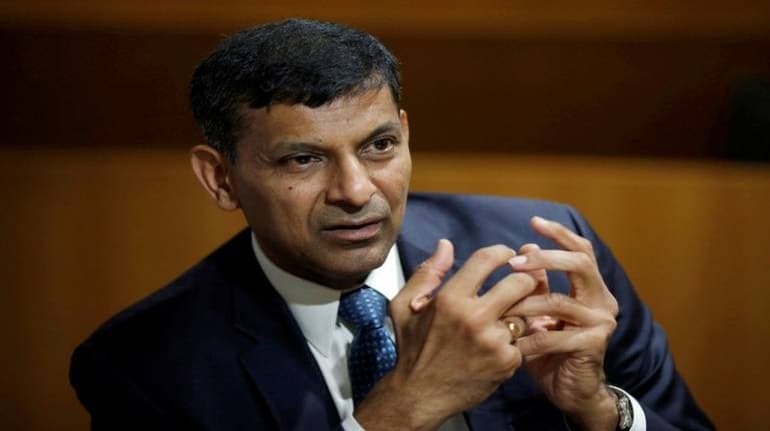



The recent Q1FY21 GDP numbers “should alarm us all”, former Reserve Bank of India (RBI) Governor Raghuram Rajan said.
In a document post titled ‘The Alarm in the GDP Numbers’ shared via his LinkedIn account, Rajan pointed out that the 23.9 percent contraction in India’s GDP numbers “will probably be worse” when informal sector estimates are accounted for.
He compared the slump to numbers recorded worldwide, pointing out the 12.4 percent and 9 percent fall in GDP data in Italy and the United States, respectively – two of the worst affected advanced countries.
“Yet India is even worse off than these comparisons suggest. The pandemic is still raging in India, he said adding that government relief becomes “all the more important” but has been “meagre and patchy.”
Acknowledging the government's reluctance to do more as a means to conserve resources for a possible future stimulus, Rajan noted “this strategy is self-defeating.”
“If you think of the economy as a patient, relief is the sustenance the patient needs while on the sickbed and fighting the disease. Without relief, households skip meals, pull their children out of school and send them to work or beg, pledge their gold to borrow, let EMIs and rent arrears pile up... by the time the disease is contained, the patient has become a shell of herself,” he reasoned.
He then likened the economy to a tonic which can help the patient get out of her sickbed faster when the disease is vanquished. “…if the patient has atrophied, stimulus will have little effect. Even if they start earning, indebted households will not consume freely, especially if they believe they have to manage further periods without livelihoods or government help,” he noted.
He called out government officials waiting for a stimulus once India has finally contained the virus for underestimating the damage. Adding: “Instead of claiming there is a V-shaped recovery round the corner, they should wonder why the US, despite spending over 20 percent of GDP in fiscal and credit relief measures, is still worried the economy will not return to pre-pandemic GDP levels by the end of 2021.”
“This mindset is too pessimistic, but the government will have to expand the resource envelope in every way possible, and spend as cleverly as possible … this requires a more thoughtful and active government. Unfortunately, after an initial burst of activity, it seems to have retreated into a shell,” he added.
For resources, Rajan suggested Indian could borrow from the bond markets if it committed to return to fiscal viability over the medium term and added that sale of public sector firm shares and assets, could also be employed.
“Even if sales do not take place immediately, preparations for sale, as well as an announced time table, will give bond markets greater conviction the government is serious about restoring fiscal stability,” he noted.
On government spending, Rajan emphasised the need to prioritise. Among his suggestions include:
- Replenishing of “tried and tested” MNREGA,
- Direct cash transfers to the poorest households, especially in urban areas without MNREGA,
- Quick clearance of government and public sector firm payables,
- Rebate in GST or corporate income tax for small and medium firms,
- Recapitalisation of public sector banks (PSBs),
- Encouragement of private sector to “give a helping hand”, where “cash-rich platforms like Amazon Reliance, and Walmart could help smaller suppliers get back on their feet, even funding them”, and
- All large firms should be incentivized to clear their receivables quickly
He also emphasised the need for a “well-thought-out plan to deal with the coming financial distress” as loan moratoriums come to an end. He suggested:
- Structures to help debtors and claimants such as landlords and banks reach agreements,
- Setting up of arbitration forums to renegotiate claims
- Support to civil courts, debt recovery tribunals, and the NCLT to provide rapid back-up judgments
Rajan also noted that given the depth of the contraction, stimulus will be needed – especially in infrastructure construction which creates jobs and increases demand. “The Centre should replenish the coffers of the state governments, which typically spend more on infrastructure,” he noted, adding that this can be accounted for as part of the GST dues the Centre owes states.
“Reforms can be a form of stimulus, and even if not carried out immediately, a timeline to undertake them can boost current investor sentiment,” he noted. Pointing out if India wants to use exports as a way to grow, the government should reverse its recent raising of tariffs to be competitive.
“Temporary half-baked "reforms", such as the recent suspension of labour protections in a number of states, will do little to enthuse industry or workers, and give reforms a bad name,” he added.
“India needs strong growth, not just to satisfy the aspirations of our youth but to keep our unfriendly neighbours at bay,” Rajan said. He added that the recent pick-up in sectors such as auto do not evidence V-shaped recovery, but is instead pent-up demand, which will fade.
“No doubt, the government and its bureaucrats are working hard as always, but they need to be frightened out of their complacency and into meaningful activity. If there is a silver lining in the awful GDP numbers, hopefully it is that,” he said.
Discover the latest Business News, Sensex, and Nifty updates. Obtain Personal Finance insights, tax queries, and expert opinions on Moneycontrol or download the Moneycontrol App to stay updated!
Find the best of Al News in one place, specially curated for you every weekend.
Stay on top of the latest tech trends and biggest startup news.